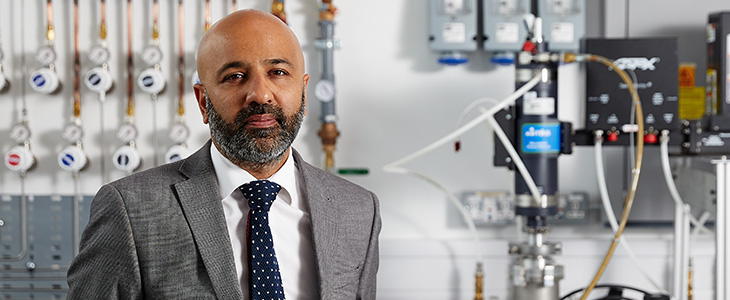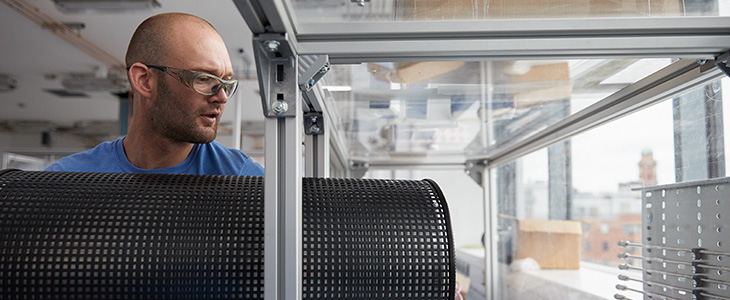What is Manchester Fuel Cell Innovation Centre
We are the landmark £4.1m state-of-the-art laboratories, leading the way in harnessing renewable energy.
The Centre is exploring the pure science of the fuel cell itself, driving engagement with industry on a local, national and international scale, and developing the technology talent of tomorrow.
How can Manchester Fuel Cell Innovation Centre help my business?
We can work with you on:
- Feasibility studies into the production of hydrogen by various processes and technologies, in particular using renewable energy
- Developing materials, processes and systems/sub-systems for the storage of hydrogen
- Projects that use hydrogen as a fuel for stationary, automobile and portable fuel cell applications
- Developing hydrogen infrastructure in public-private collaboration for the production, storage and applications of hydrogen – includes safety, standards and codes, capacity building and public awareness
- Demonstration projects relating to hydrogen production, storage and application
- Developing and demonstrating the application of hydrogen and fuel cells for power generation and transportation with SMEs and industry.
What is a fuel cell?
Fuel cells produce electricity through a chemical reaction without combustion.
This converts hydrogen and oxygen into water, generating electricity in the process. This electrochemical conversion, which takes place in electrolysers, produces water, electricity and heat.
Fuel Cells are a clean and efficient source of energy. They work through a chemical process of converting hydrogen into electricity, with the only by-products being electricity, heat and water, and are almost silent, since they don’t have any moving parts.
Unlike traditional batteries, fuel cells do not need to be recharged. As long as they have a fuel source, they can keep putting out electricity.
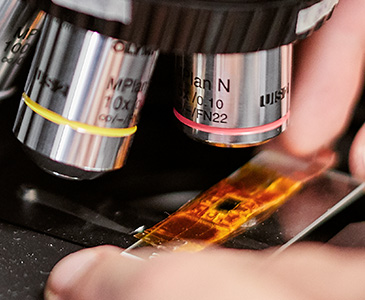
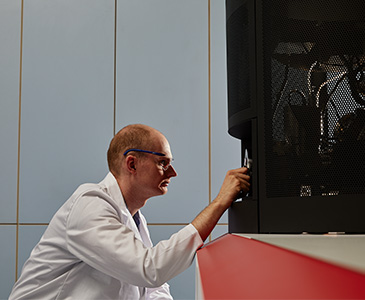
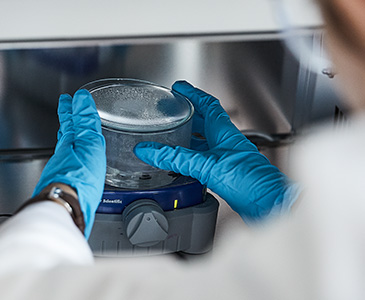
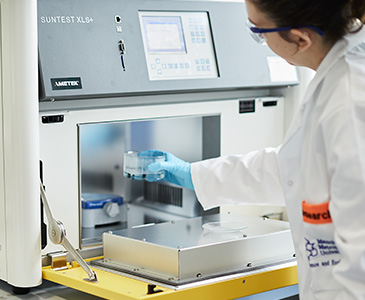
Why hydrogen?
Hydrogen is the most common element, making up 75% of the mass of the entire universe.
This versatile fuel produces only electricity, water and heat when used. Hydrogen fuel can be generated in a carbon neutral way by using renewable power.
What is hydrogen?
Hydrogen is a chemical element: it’s in the water we drink, the air we breathe and is the most abundant element in the universe.
It was first discovered as an element in 1766 by Henry Cavendish, and since then has been used to make balloons and planes fly, power demonstration houses, and even send NASA astronauts into space.
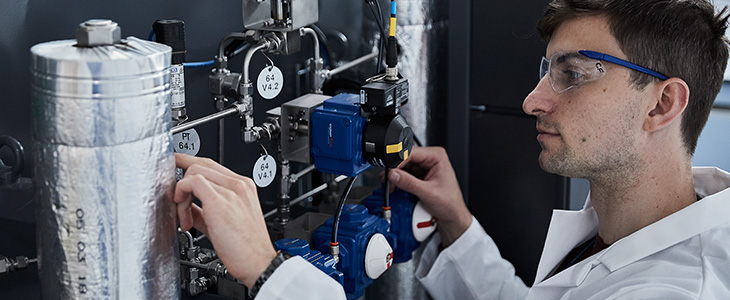
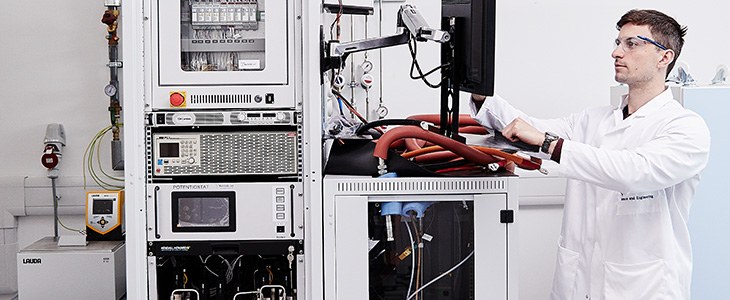
Why is it preferable to other fuel sources?
Hydrogen is a fuel source with many advantages, for us and for our planet.
It is colourless, odourless and non-toxic, so using it doesn’t contribute to harmful emissions, acid rain or ozone depletion. If you use hydrogen as a fuel, the only by-products are electricity, heat and water.
Hydrogen also offers 2-3 times more energy than other common fuels and is the lightest of all elements and gases. This means that, unlike oil, is there is a leak of hydrogen, it will simply disperse safely into the air.
How do we make hydrogen?
We make low-carbon hydrogen, which refers to hydrogen produced in a way that uses and releases a minimal amount of carbon.
There are a number of ways that this can be done:
- Electrolysis of water using low-carbon electricity
- Steam reformation of bio-methane produced from appropriate feedstocks
- Steam reformation of natural gas or coal with CCS
- Thermolytic splitting of water using low-carbon heat
- High-temperature electrolysis using low-carbon electricity

How do fuel cells generate electricity?
Inside a fuel cell are two electrodes: a positively charged anode and a negatively charged cathode. These electrodes sit within an electrolyte that has a synthetic polymer membrane. This membrane keeps hydrogen and oxygen separate, only allowing certain ions through.
Hydrogen atoms are introduced at the anode side. Here, they are stripped of their negatively charged electrons. They can then pass through the anode and travel around an electrical circuit to produce electricity.
The hydrogen (which is now positively charged) now travels through the centre of the electrolyte membrane to the cathode side. At this point, they are joined by remaining oxygen atoms and electrons to form the water that is one of the by-products of fuel cells, along with electricity and heat.
What can fuel cells be used for?
Exactly, what fuel cells can be used for is limitless: it can power your home, your car, whole transport networks and even national grids.
One of the advantages of fuel cells is that they can be grouped together in ‘stacks’ to meet larger energy demands, while smaller fuel cells have the potential to power phones, laptops and technology such as hearing aids.
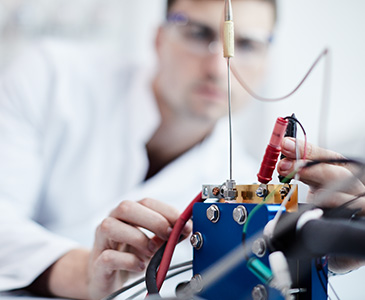
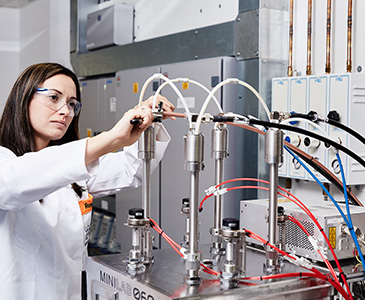
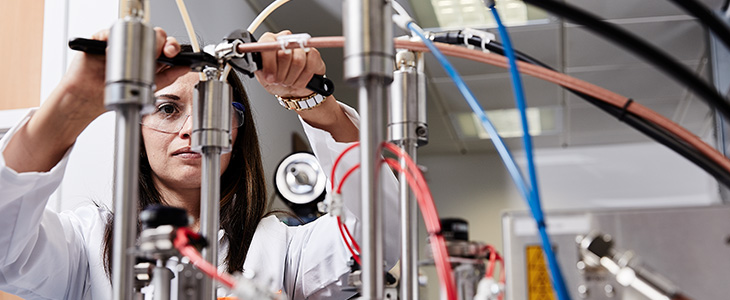
Why is research like that carried out by the Fuel Centre so important?
The race is on to find the next big energy source. The Earth’s natural resources are finite. Current estimates indicate reserves of coal will be depleted by 2088. We need to find new and sustainable ways to power our lives in harmony with our planet.
Hydrogen is a clean, efficient energy source with the potential to transform lives and businesses, and we want to collaborate with businesses and educators to turn this possibility into reality.
If you have further questions about Manchester Fuel Cell Innovation Centre, contact us.
